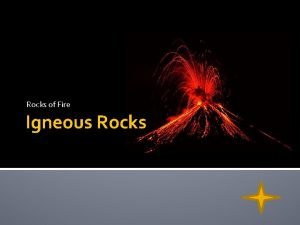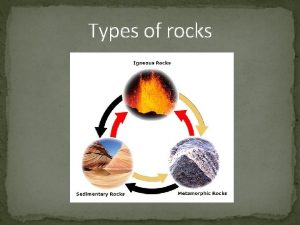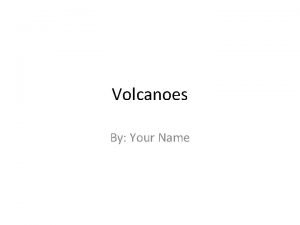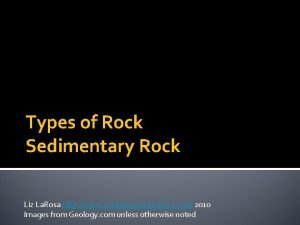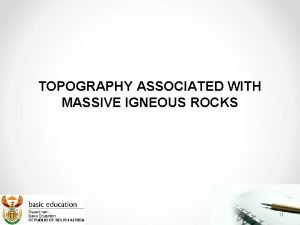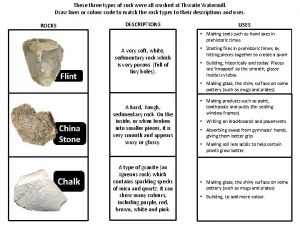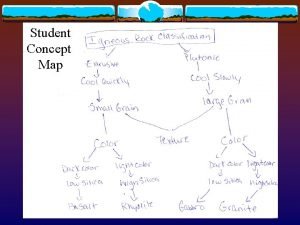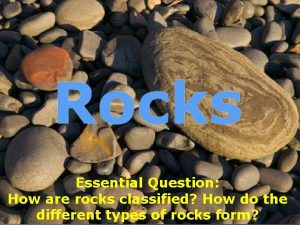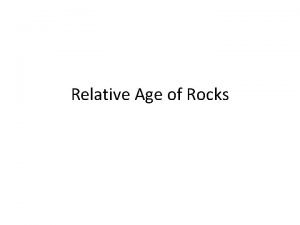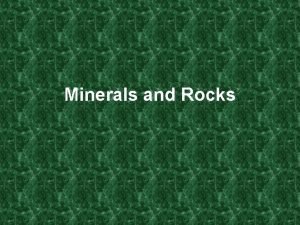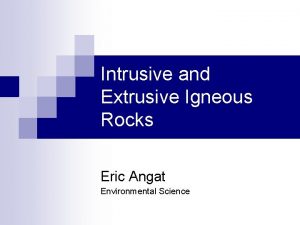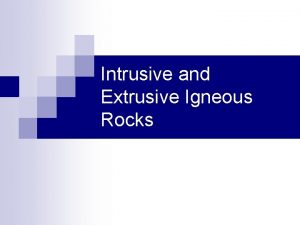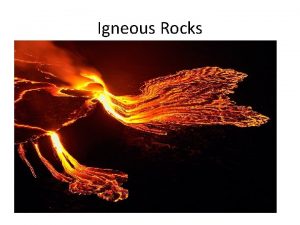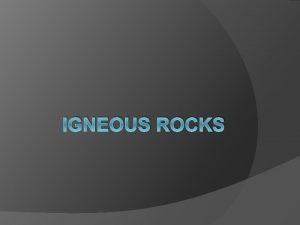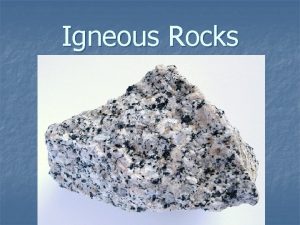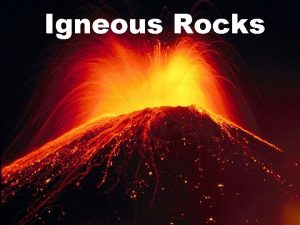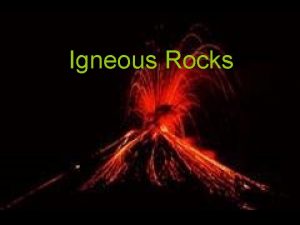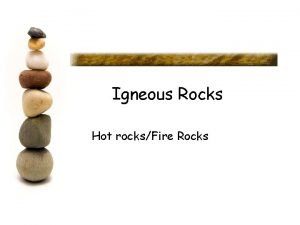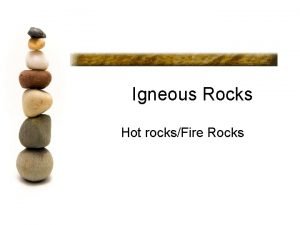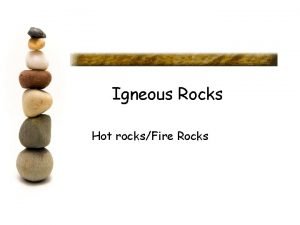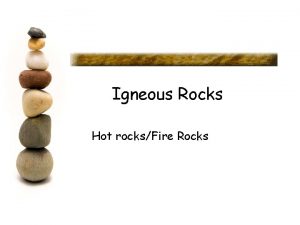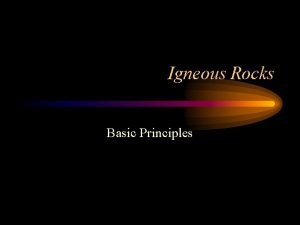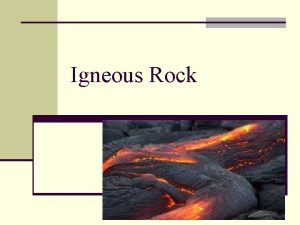Igneous Rocks Igneous Rocks Form from Lava or
















- Slides: 16

Igneous Rocks

Igneous Rocks • Form from Lava or Magma • Made of mineral crystals • Classified according to: – Origin – Texture – Mineral Composition

Origin of Igneous Rocks • Classified according to where they formed. Intrusive Extrusive

Origin of Igneous Rocks Intrusive • Forms when magma hardens beneath Earth’s surface • Granite makes up most of the continental crust.

Origin of Igneous Rocks Extrusive • Forms from lava that erupted onto Earth’s surface • Basalt forms much of the ocean crust.

Which is a way to identify if a rock is Igneous? A • Streak B • Origin C • Solid D • Hardness

Igneous Rock Textures Coarse Grained Fine Grained • Slowly cooling, large crystals • Example: Granite • Lava cools quickly • Forms smaller crystals. Porphyritic • Both textures – large AND small crystals. • Cools slowly, then rapidly. No Crystals • Rock cools too quickly for crystals to form.

What is a Crystal? • A solid in which the atoms are arranged in a pattern that repeats again and again.

Igneous Rock Textures • Depends on the size and shape of it’s mineral crystals. Coarse Grained Porphyritic No Crystals Fine Grained No Crystals

A rock that has two kinds of texture is called… A • Coarse-grained B • Fine-grained C • Porphyritic D • No visible crystals

Mineral Composition • Most of Earth’s rocks contain silica (silicon dioxide, Si. O 2) High Silica (Felsic) • Forms light colored rocks. • Granite is dark to light gray, red and pink. Low Silica (Mafic) • Forms dark colored rocks. • Basalt contains dark colored minerals. No quartz.

Silica Content • Felsic • Mafic – Granite – Rhyolite – Basalt – Gabbro • Intermediate – Diorite – Andesite

Igneous Rock Chart Coarse Grained Porphyritic No Crystals Fine. Grained Intrusive (Magma) Extrusive (Lava) Origin Both Low Felsic (High) Density Silica Granite Continental Crust High Mafic (low) Gabbro Large crystals with small crystals Scattered on top. Rhyolite Basalt Ocean Crust Pumice Obsidian

Which rock likely has the most silica? A B C

Uses of Igneous Rocks Granite - building materials Obsidianare - sharp tools because • Igneous rocks useful they are hard, durable and dense Basalt - gravel, construction Pumice - used for cleaning and polishing

What to Work On Hyperdoc on Google Classroom DUE: DUE Thursday April 23
 Types of igneous rock
Types of igneous rock Igneous rocks metamorphic rocks and sedimentary rocks
Igneous rocks metamorphic rocks and sedimentary rocks Perbedaan hot lava dan hot lava volcano
Perbedaan hot lava dan hot lava volcano Defintion of magma
Defintion of magma Types of rocks examples
Types of rocks examples Taal volcano is an example of_______ volcano
Taal volcano is an example of_______ volcano Concept map for igneous rocks
Concept map for igneous rocks Igneous rock
Igneous rock Three types of igneous rocks
Three types of igneous rocks Igneous rocks concept map
Igneous rocks concept map Rocks classified
Rocks classified Concept map of minerals and rocks
Concept map of minerals and rocks Marli miller
Marli miller Luster streak
Luster streak Intrusive or extrusive
Intrusive or extrusive Pumice extrusive or intrusive
Pumice extrusive or intrusive Venn diagram of intrusive and extrusive igneous rocks
Venn diagram of intrusive and extrusive igneous rocks



